Balk at the animals
The 1967 Doctor Dolittle is famous for being bad, which does not automatically mean that it’s bad. Plenty of good movies are known for being bad. But few of those bad movies have had a bestseller written about the fact that they are bad. That is one of the main takeaways of the terrific 2008 book Pictures at a Revolution by Mark Harris, which offers a panoramic view of Hollywood’s shift from the classic studio era to the “New Hollywood” via a deep dive into all five 1968 Best Picture nominees (this, Bonnie and Clyde, The Graduate, Guess Who’s Coming to Dinner, and eventual winner In the Heat of the Night). It’s not just Harris, though: In 2020, critic Tim Brayton declared Doctor Dolittle the worst Best Picture nominee ever released. It’s a film with a deep negative rating on Rotten Tomatoes for both critic and audience scores, a rare moment of four-quadrant disdain.
So here’s where I swoop in and say, “not so fast,” right? I’m always a bit of a skeptic of universal praise or universal hatred, so I came in hoping to like this. To quote Kinemalogue’s Hunter Allen on his Letterboxd capsule of this film: “I like liking things.” Amen to that. But alas. I don’t like it. I do not think it is the worst Best Picture nominee of all time, not when Extremely Loud and Incredibly Close exists, but I will unfortunately not be the contrarian here.
Doctor Dolittle has its charms, though. In fact, many of the traits that got it labeled stodgy in its day are now endearingly old-fashioned: It’s a massive, lumbering, whimsical musical with a shaggy plot. It relishes its own sprawl. Its production offers something you might generously call grandeur: elaborate sets, a huge menagerie of animals, and a busy original recitative score by Leslie Bricusse (who also wrote the screenplay). The many millions of dollars that Fox poured into it offered a baseline of watchable Hollywood spectacle even though it never goes much past that baseline.

The story draws from three of Hugh Lofting’s Dolittle books: The Story of Doctor Dolittle (as also seen in the 1928 adaptation), The Voyages of Doctor Dolittle, and Doctor Dolittle’s Circus (books 1, 2 and 4 in the series, respectively). This helps explain the film’s meandering structure. We’re introduced to the eccentric Doctor John Dolittle (Rex Harrison), a former physician turned animal whisperer and vet; his lackey Matthew (Anthony Newley); young apprentice Tommy (William Dix); and a talkative macaw named Polynesia (voiced by Ginny Tyler) who teaches Dolittle how to understand animal “language” via gestures. (Notably, no voiceover of the animals “talking” other than Polynesia.) The character of Emma Fairfax (Samantha Eggar) is a movie invention, here to lend the film some misguided feminine charm and romantic ballast.
The plot starts as a sort of English countryside hangout film: Dolittle’s Victorian home doubles as a zoo of sorts, which makes him persona non grata to the fuddy-duddies of Puddleby-on-the-Marsh. After a slow flashback introducing this setup, the borderline-nonsense episodes ensue: His attempt to finance a new expedition leads to him showcasing a two-headed llama called a pushmi-pullyu at a circus. He also falls in love with a lady seal and helps her return home by tossing her into the ocean in a human disguise. This results in his arrest for murder, as spectators believe he threw an actual person off a cliff. This, in turn, leads to a courtroom drama sequence debating the merits of vegetarianism. Dr. Dolittle escapes the attempts of the masses to throw him in an insane asylum, which sets off a globetrotting quest for a giant pink snail…
That’s a whole lot of plot, and yet all of that narrative gibberish happens before the intermission. Even more insanely, the film packs in all of that and somehow still has a leaden, get-on-with-it-already pacing.
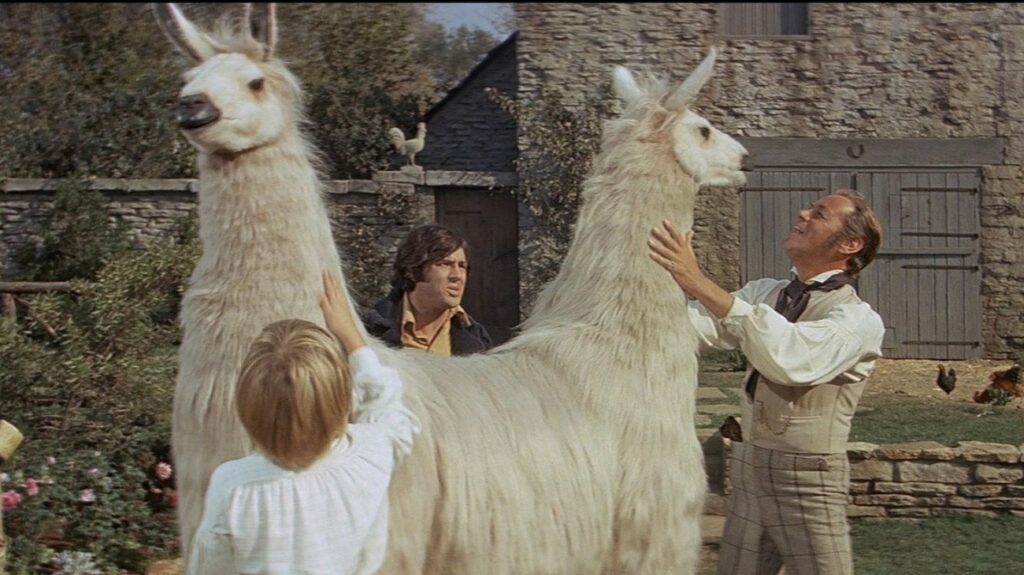
The second half kicks off with Dolittle setting sail, flanked by his crew: Matthew, Tommy, a few animals, and Emma, who pivots from spunky, aristocracy-spiting feminist to horribly executed romantic interest for the seemingly asexual (or maybe seal-sexual) Dr. Dolittle. And the rest of the film follows their journey and visit to the exotic Sea Star Island.
Sea Star Island, the potential grand payoff, plays like a fever dream, with Bricusse scrambling to subvert the racism of Lofting’s books. The natives are unexpectedly wise and articulate, their leader named Willie Shakespeare (Geoffrey Holder), a reinvention of “Prince Bumpo” of the books. Eventually, we meet the pink snail. It’s not a detailed or intricate construction, but I actually like its imposing, alien, abstract design. I particularly enjoyed the short scene set inside its fake-glass body.
Across its bloated runtime, some of Doctor Dolittle’s episodes are mildly charming in isolation, but the big storytelling problem is that Bricusse and director Richard Fleischer fail to string them together with any energy or direction. Where a film like Mary Poppins spins its digressions with a delightful sense of childlike wonder that accumulates to a feeling of grand giddiness, Doctor Dolittle offers meandering nothings that rarely connect emotionally or dramatically. Every new incident feels like another 20-minute detour and another deflation of momentum.
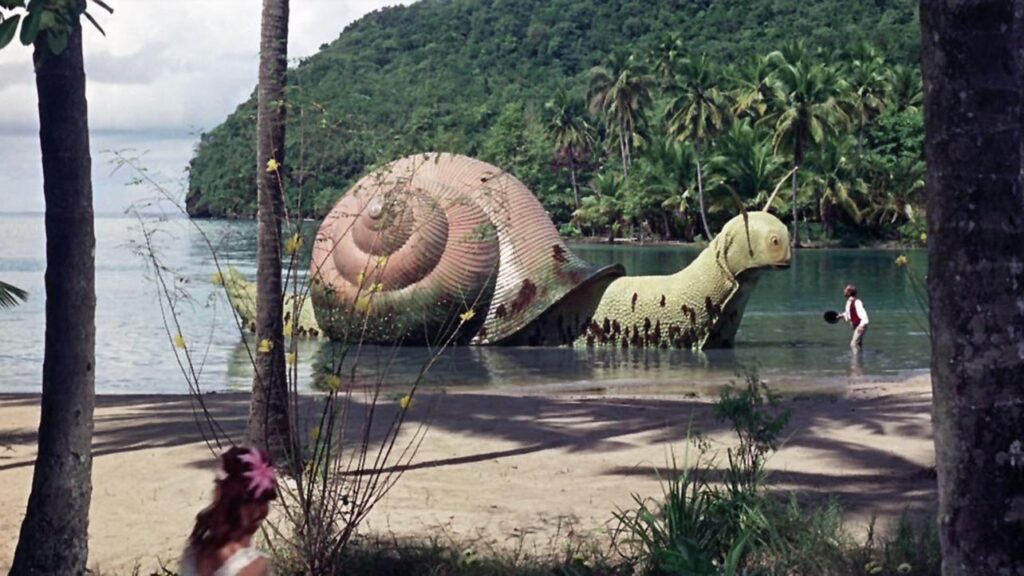
Plenty of bad storytelling decisions compound the sense of narrative malaise. The late-breaking romance between Dolittle and Emma is a catastrophic misfire. The winking narrative moments, like Dolittle blindly guessing the exact spot in the world that the snail would show up, offer serious eye rolls rather than any sort of amusement. And the acting chemistry is all off; Harrison’s presence is haughty rather than delightful, and he has no rapport with anyone else in the cast.
Doctor Dolittle is also not much of a musical. Most of the soundtrack is built around Harrison’s tuneless singing style, half-declared half-mumbled, which is certainly a swing (or maybe an anti-swing) and motivated by maximizing the talents of the actor. Harrison is admittedly quite good at the kind of “singing” asked of him. But the result is that nothing is an earworm as performed; that “Talk to the Animals” won an Oscar and became a standard is a triumph of marketing. Multiple big-name artists released their own versions of the song (and others in the soundtrack) with the film’s release, and it’s telling that it’s hard to find clips of the original version of the song from the movie online, with the more heartily sung covers much more popular on Spotify and YouTube. The film’s songs that are anything other than Harrison recitations fail to do much except reveal how half-baked the Bricusse compositions here are.
In almost every way, the story of Doctor Dolittle’s production, as fastidiously documented in Pictures at a Revolution, is much more exciting than anything on screen. It’s a full-blown Hollywood disaster saga: millions over budget, sets destroyed by weather, animal logistics that spiraled into chaos. The English town of Castle Combe, forced to hide their TV antennas and modern trappings for the shoot, became so annoyed by the production that a young Ranulph Fiennes (the explorer, not the actor) allegedly tried to blow up a concrete dam the studio installed. At one point, producers had to buy a second set of animals because they forgot that the UK’s quarantine laws meant the ones they bought couldn’t be used right away for shooting internationally.
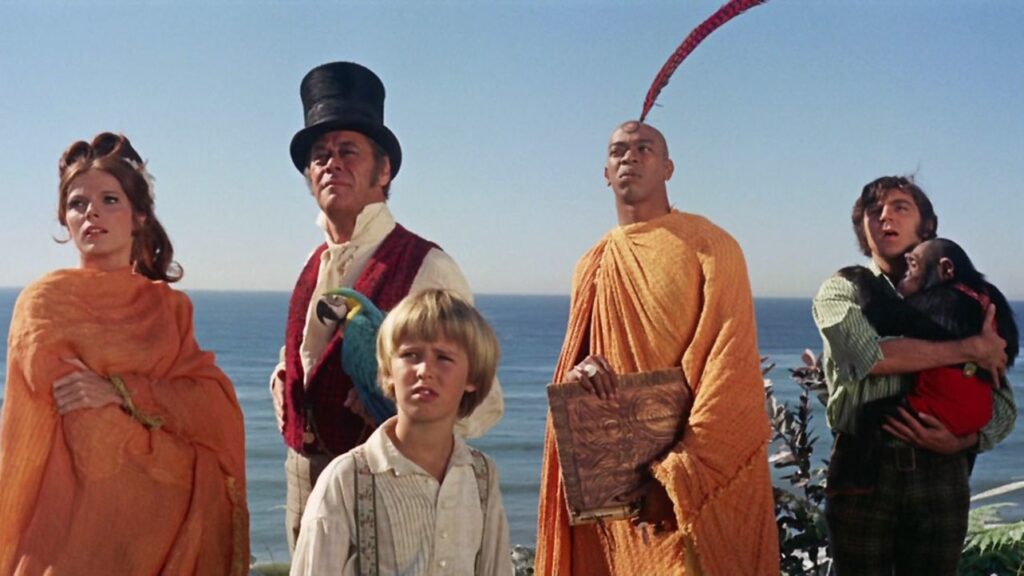
And that’s not even getting into the human drama. Rex Harrison reportedly feuded with nearly everyone, pushing Sammy Davis Jr. off the cast list for not being a “real actor” (gee, I wonder why Fox wanted to cast Davis Jr. in a musical). Harrison, who leveraged tremendous control during pre-production negotiations following the massive success of My Fair Lady, did Fox few favors with erratic demands and behavior. Bricusse was far from the first choice to script the film, and he inadvertently plagiarized the plot point of animals forming a union from Helen Winston’s discarded script draft to which Fox didn’t hold the rights. He had incorrectly assumed it had come from the books he was adapting (which he’d only skimmed). The result was a big lawsuit and payout to Winston. Meanwhile, Harrison sabotaged and phoned in scenes with Anthony Newley, whom he hated at least in part due to antisemitism. Geoffrey Holder endured racism from Harrison’s entourage, which hung around production at Harrison’s insistence. Harrison briefly quit the project, and Fox hired Christopher Plummer; when Harrison returned to the project, Fox was still on the hook for Plummer’s salary even though he didn’t film a single take.
Even after bombing with both critics and audiences (making back barely half of its then-astronomical $17 million budget and recouping little of its investment in merchandising), Doctor Dolittle emerged with nine Academy Award nominations including one win, for “Talk to the Animals.” This is regarded in retrospect (and, according to some quotes in Pictures at a Revolution, in real time) as a case of a studio muscling its sway with Academy voters, probably the most notorious on record until Harvey Weinstein turned Academy manipulation into an art form in the ‘90s. But I can’t really hold it against either Fox or the Academy too much. This kind of voter coaxing has happened since Hollywood started giving itself awards; Doctor Dolittle just represented a particularly egregious and against-consensus example. I suspect it was effective in part because the Academy had the muscle memory of giving this kind of movie lots of awards. In the previous few years alone, both My Fair Lady and The Sound of Music, in the same genre as Doctor Dolittle, had won Best Picture and cleaned up on Oscar night. (Harrison even won Best Actor for the former).
Most of this review has been skewering, so let’s pause to remember that the film has its merits. When Doctor Dolittle embraces its identity as a sprawling, roadshow spectacle, it offers a fun, colorful production. Having a menagerie of real animals on screen is a treat. Robert Surtees’ cinematography has received a bad rap in recent years, but I like it. It is lush and painterly, and the sets are mostly wonderful, with a bit of that Mary Poppins Victorian England dollhouse aesthetic. The sea voyage segments, as narratively listless as they are, still look terrific. And the film always keeps its finger on the pulse of the premise, the charm of a world where animals are your partners in mischief for grand adventures. For what it’s worth, and I think it’s not very much, this is also the most book-accurate adaptation of Lofting’s Doctor Dolittle stories aside from the 1928 silhouette animation shorts by Lotte Reiniger.
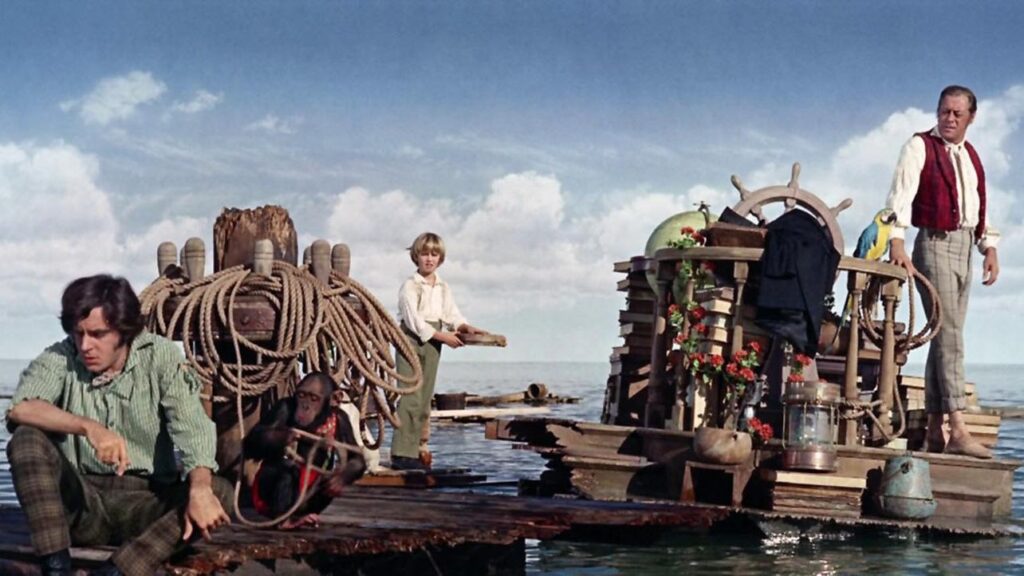
But also I ask myself: Who should watch this movie? Best Picture nominee completionists will, of course. Aficionados of mid-century bloated musicals might have a good time. Lovers of animal hijinks hoping to soak in the many beasts on screen will get their fill. I just think this film represents a lower-end experience for each of those moviegoing groups. Then again, I understand feeling a pull to a film like this; I even admire it. It has enough idiosyncrasies to stand out in a crooked sort of way: Even when it is not good, Doctor Dolittle is flavorful and peculiar, which goes a long way towards inspiring curiosity. Its combination of high-powered roadshow production, distinct musical recitative style, imagination-sparking premise, tint of psychedelia, and car-crash atonality is truly special. Just not good-special.
(Shout out especially to my podcast co-host Brian who wrote a tribute to the film in 2013 when he ranked it as one of his favorite movies. I admire against-the-grain takes that are well-founded and not simply contrarian, and his love of this film is a great example. It was his selection of the film for discussion on our podcast that’s the reason I ended up watching any of these Dolittle movies in the first place.)
Doctor Dolittle is not a great film, and it’s closer to outright bad than it is to good in my eyes. Where it has enduring value is schadenfreude, if doom-watching is your jam (it is not mine). And even beyond that, it’s a historical artifact: It came out the same year that “New Hollywood” really established itself and reshaped American filmmaking, and is thus a twilight production of a great era of Hollywood musical, informative and fascinating as a comparison point to other films of the time. But like most historical artifacts, it’s ultimately best viewed from a distance.
Is It Good?
Not Very Good (3/8)
Dan is the founder and head critic of The Goods. Follow Dan on Letterboxd. Join the Discord for updates and discussion.

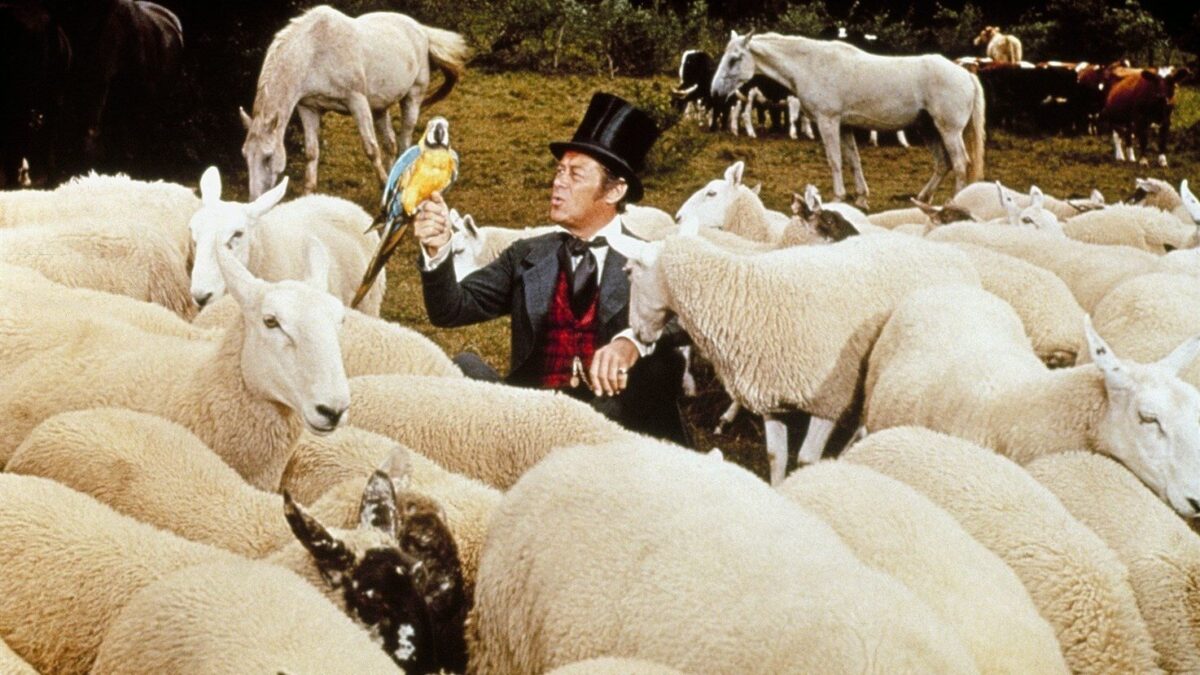
2 replies on “Doctor Dolittle (1967)”
“Who should watch this movie?”
Richard Fleischer fans. Oh, right, that’s also just me and I slot readily enough under musical aficionado. (Though less the bloated 60s ones, which I’ve really only recently started slogging through. I think I come to film musicals from nearly the exact opposite direction most people do, because what got me into it was… well, La La Land is the uncool truth, but first MGM films from the 50s, then the Berkeleys and Astaire/Rogerses of the 30s, then with some reluctance the big Rodgers/Hammersteins and other “why the hell is this three hours long?” musicals of the 60s. I believe Brayton, for instance–and I think he’s more typical–tracks his path from an interest in actual Broadway, which I don’t possess, and so went naturally to the 60s first, then the 30s, then the 40s and 50s. Shook my whole worldview when he told me a few years back he’d never seen an Esther Williams, which he’s corrected since then, but hey, by the same token I’ve still never seen, like, Funny Girl or Hello Dolly or even more than a couple of Elvis Presley musicals.) Anyway, Richard Fleischer rules, though this is not a movie that says “Richard Fleischer” stylistically except in the way it’s sort of unhurried, which I think works for it right up until that disaster of a romance which exists solely because it “worked” in My Fair Lady even though that is, speaking frankly, a fundamental misreading of the relationship in My Fair Lady albeit a shockingly common one. (Seriously, I don’t know how anyone manages to see the 1964 film’s Henry Higgins as even potentially heterosexual.) Still have never read Pictures At a Revolution as I perceive a strong probability of being annoyed by it, though I’ll note that Fleischer’s autobiography is irritatingly sparse on the subject of the actual production of Dolittle so at some point I’m gonna have to, unless Roadshow!’s section on Dolittle gets the juicier stuff across just as well.
As for the rest of Doctor Dolittle, I appreciate that you approached it with an open mind and a true generosity of spirit and… still didn’t like it, but I think rather fairly. Though I find it baffling that it could have a lower reputation (in some cases “an even lower reputation”) amongst the death era of the musical than e.g. Camelot, Gigi, or Paint Your Wagon, and at least slightly confusing how Mary Poppins is completely different enough to be rated WAY higher. I guess if you go to Old Hollywood musicals for the actual music, maybe, and I mostly concede the judgment that Dolittle is pretty bad at being a musical. (I do like “Talk To the Animals,” though maybe not exactly “as a song.”)
I do wish it did more for me. Maybe I’ll watch again some day, this time with my kids, which often helps me see movies through fresh eyes. I never made much time for older films as I was growing up, and I certainly still have a large gap in musicals that I hope to correct. For example, I haven’t actually seen My Fair Lady or The Sound of Music all the way through, and this comment at least gives me a little bit of a roadmap. I also have the book The Movie Musical by Jeanine Basinger, though she opens the book panning La La Land which soured me a little. Never heard of Roadshow! but just looked it up.